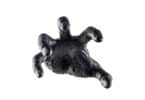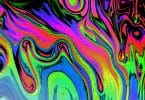Neurology deals with disorders of the nervous system, from strokes to seizures, but also including a whole array of other conditions affecting patients.
Dr. Zachar fielded questions during this week’s ‘Ask a Doctor – Q & A’ dealing with hemorrhagic strokes and focal seizures among other conditions. Could CBD help in the treatment of Neuropathic disorders?
Question: I had a hemorrhagic stroke of the brain-stem less than three months ago. Since then, I have neuropathy on my right affecting my right hand, right side of my face, and the right side of my mouth. I’ve been using another brand (not yours), of CBD and I tapered myself up to a dose which I take many times during the day. My goal is to get to a dose that I need only twice a day. I have very bad neuropathy on my right side. It bothers me most on my hand, face and inside half of my mouth.
A cerebrovascular accident affecting the sensory fibers can be very frightening.
You do not have neuropathic pain. You have sensory neuropathy. You had a stroke that affected the sensory nerves.
Neuropathy is a disorder where there is a dysfunction in the transmission of sensory nerves to the brain. The location of this dysfunction are the nerves in your spine.
The origin of the sensory symptoms you have is “upper neuron”, i.e., above the spine.
CBD, or for that matter, no medication can eliminate the sensory neuropathy that resulted from the stroke.
However, CBD can certainly lessen the pins and needles sensation you have affecting you hand, face and mouth.
Question: Does cannabis help with focal seizures?
Yes. CBD decreases glutamate release. As a result, CBD increases the seizure threshold.
Therefore, CBD decreases the incidence of all types of seizures, which include focal seizures. There is no toxicity or dependence or addiction potential with CBD it is safe.
Period.
Question: When can I stop my phenytoin sodium. It is 25-mg, the lowest dose the doctor has ever prescribed me?
Answer:
Before I give you the answer, let me explain why I am answering a medical question unrelated to cannabis on the “Ask a Doctor” forum. Because, when it comes to treating seizures, the same “rule of thumb” for dosing that applies to conventional medication such as phenytoin, also applies to all anti-epileptics, (and CBD is an anti-epileptic) in the treatment of seizures.
When a patient has been seizure-free for period of time, as determined by the neurologist, both the patient & the doctor may decide to stop the medication for a number of reasons.
One common reason is that in many states, a person is not allowed to drive unless he has been without seizures.
Meanwhile, no one wants to be on a medication for the rest of their life unless it is vital.
Doctors may then choose to SLOWLY decrease the seizure medication and observe the patient for breakthrough seizures. Once the dose is “zero”, then the patient is both off medication and without seizures. The same “rule of thumb” applies to CBD when it is used to treat seizures.
If the patient and the doctor wish to decrease the dose, then it must be done SLOWLY. Now to answer your question:
The maintenance dose of phenytoin is 300-600-mg a day.
Most people take 300-mg a day.
If your doctor has tapered you down to 25-mg a day, then you are way under the limit of a dose to control seizures.
Ask your doctor if it can be stopped because if you have an active seizure disorder, then you are not being protected because this dose is only 8% of the dose needed.
On the other hand, if you do not have an active seizure disorder, then you do not need to be on any phenytoin in the first place and the phenytoin should be stopped.
Question: I suffered a stroke five years ago and since then I am paralyzed on my right side & I am in pain 24/7. I currently use CBD for sleep. Please educate me about how I can use CBD oil for pain.
CBD oil tincture taken sublingually is considered one of the quickest ways to feel the effects of the CBD. The onset is 5-20 minutes.
CBD oil tincture also offers an exact measure of the dose you wish to take. It is easy to taper up to achieve the optimum dose.
Use a dropper to measure the number of drops you need to take.
Leave the oil tincture under your tongue for a minute or two giving it sometime to absorb.
After that, you can swallow it and the remaining CBD will be absorbed by the gut.
Don’t smoke before you take the CBD sublingually because smoking decreases the absorption of sublingual medication.
Start with 4-6 drops (4-6-mg) of CBD a day & divide it into doses.
Increase the dose every few days until you get your desired relief. Then maintain that does for a month, and re-evaluate.
As per your request, we are moving the weekly In-house doctor session from Thursday at 1 pm EST, to Thursday at 3 pm EST (That’s UK’s 20:00, NYC’s 15:00 and LA’s 12:00)
If you want to read more from Dr Zachar, check out: ‘Ask A Doctor – CBD & Pregnancy – Part 2′
[maxbutton id=”10″] [Image credit: Pixabay]








